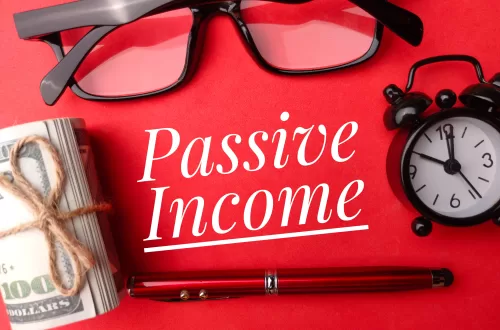What is Loan Forgiveness
Loan forgiveness sounds like a great deal for those who are struggling to repay their student loans. But how does loan forgiveness actually work? Loan forgiveness programs are typically offered by the government or nonprofit organizations, and they offer to cancel all or part of a borrower’s debt if they meet certain conditions. The most common type of loan forgiveness is the Public Service Loan Forgiveness Program, which forgives federal student loans for borrowers who work in public service.
The government may also forgive student loans for borrowers who meet the income-based repayment program (IBR) or pay off their loans within a certain period of time. The following questions and answers can help you learn more about loan forgiveness programs.

What is Loan Forgiveness
Loan forgiveness is the act of cancelling a debt. This can be done by the lender, or by a third party. There are many reasons why someone may want to get loan forgiveness, but the most common is financial hardship.
When a borrower is unable to repay their loan, they may request loan forgiveness from their lender. This is usually done in cases of financial hardship, where the borrower can no longer make payments on their debt. If the lender agrees to forgive the loan, they will cancel the debt and the borrower will not be responsible for repaying it.
There are also cases where a third party may offer to pay off a borrower’s debt. This can be done as a way to help the borrower get out of debt, or as an investment.
What are the Requirements
In today’s world, there are many different options for loan forgiveness. Whether you’re looking to start fresh with student loans or you’re already in repayment, there are programs that can help. Here’s a quick rundown of what you need to know.
To qualify for most loan forgiveness programs, you’ll need to make 120 qualifying monthly payments. That means you’ll need to be in repayment for at least 10 years before you can apply.
There are also income-driven repayment plans that can lead to loan forgiveness. These plans base your monthly payment on a percentage of your income and extend your repayment term to 20 or 25 years. If you still have a balance after making all of your required payments, the remaining amount may be forgiven.
What are the Different Types
There are many different types of loan forgiveness out there. Here are a few of the most popular:
1. The Federal Perkins Loan Cancellation and Discharge program forgives loans for certain public service jobs, including teaching, nursing, law enforcement, and more.
2. The National Health Service Corps Loan Repayment Program forgives up to $50,000 in student loans for doctors, nurses, and other health care professionals who work in underserved areas.
3. The Teacher Loan Forgiveness Program forgives up to $17,500 in student loans for teachers who work in low-income schools for at least five years.
4. The Public Service Loan Forgiveness Program forgives the remaining balance on your student loans after you make 120 payments if you work for a government or nonprofit organization.
How do I Apply
There are many reasons why you might want to consider loan forgiveness. Maybe you’re struggling to make ends meet, or you’re interested in a new career path. Whatever the reason, there are a few things you need to know about how to apply.
First, you’ll need to contact your lender and let them know that you’re interested in. They’ll likely have a few forms for you to fill out and may require some documentation from you. Be prepared to provide information about your finances and why you believe you should be eligible.
Once you’ve submitted your application, it will be up to your lender to decide whether or not to approve it. If they do approve it, they’ll work with you on a plan to forgive some or all of your remaining loan balance.
What are the tax Implications
When it comes to loan forgiveness, the tax implications can be tricky. Here’s what you need to know.
If you’re considering loan forgiveness, it’s important to understand the tax implications. For instance, if your loan is forgiven, you may be required to pay taxes on the forgiven amount.
Additionally, there may be other implications depending on the type of loan forgiveness program you’re enrolled in. So, be sure to do your research and talk to a tax advisor before making any decisions.
At the end of the day, loan forgiveness can be a great way to reduce your financial burden – but only if you understand the potential tax implications.
Is the Debt Passed on to Other Consumers
Loan forgiveness may seem like a great deal for the consumer, but is it really? When a loan is forgiven, the remaining balance is typically passed on to other consumers through higher interest rates. This means that while the consumer may be relieved of their debt, other consumers are now burdened with higher payments.
Some experts argue that it is actually harmful to the economy. By forgiving loans, we are essentially rewarding people for taking on too much debt. This can lead to more reckless borrowing in the future and can further destabilize the economy.
So, is loan forgiveness really all it’s cracked up to be? It depends on who you ask. For some, it’s a relief from an overwhelming burden. For others, it’s a dangerous precedent that could have lasting negative effects.
Conclusion
In conclusion, it seems that loan forgiveness may be more of a myth than a reality. While some consumers may see their debt forgiven, it is likely that other consumers will end up shouldering the burden. So, if you’re considering taking out a loan, you may want to think twice.







2 Comments
Lauren
I didn’t know about this, so I found this really interesting. If I know of anyone who may qualify I will have to tell them about this! Thank you for sharing.
Lauren.
Charity
This is such great information on loan forgiveness. I didnt know too much about the subject before reading so thank you so much for sharing all about it!